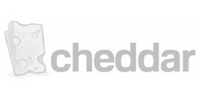Listen on the Podcast
When it comes to driving a new car, you have three basic options. You can purchase the car outright, you can purchase the car through an auto loan or you can lease the car. But, with the average price of new cars hitting $40,857 in January 2021, most people don’t have the ability to plop down the whopping forty grand for a new car.
Therefore, car shoppers are driving off the car lot with either an auto loan or a lease. But before you start shopping around for your next car, it’s important to understand the difference between the two options so you make the best decision.
Car Lease vs Auto Loan?
The simplest way to separate an auto loan and a lease is by understanding that an auto lease allows you to DRIVE the new car, whereas an auto loan allows you to DRIVE and BUY the car.
Of course there’s a lot more to it and to tell the whole story let’s start off with the auto loan.
The Auto Loan Payment
Since an auto loan is created to buy the vehicle, the loan payment is based on the following:
- Vehicle Price
- Sales Tax
- Additional Fees
- Down Payment
- Interest Rate (APR)
- Loan Term
Let’s break down an example of a typical auto loan and then the auto loan payment:
The Auto Loan Breakdown
Add the following together:
- Vehicle Price = $40,000
- Fees at Closing = $1,500
- Taxes = $3596
Subtract Down Payment
- Down Payment (20%) = $8,000
Total Loan Amount: $37,069
Next the Monthly Loan Payment
After taking the auto loan makeup from above, we will assume a 4% APR over a 60-month loan term.
- Monthly Payment: $693
- Total Interest: $3,891
Total Cost Including Interest: $48,960
The Lease Payment
The factors that make up a lease payment are different than an auto loan. If you remember, you make a monthly lease payment to drive the vehicle and a monthly car payment to drive and own the vehicle.
Therefore, the total monthly lease payment will be made up of three different monthly payments:
- The monthly depreciation
- The monthly interest
- The monthly taxes
The Auto Lease Breakdown
To start off with the monthly car lease payment, let’s first begin with the monthly depreciation.
The Depreciation
The value of the vehicle that is lost during the lease term is known as the depreciation.
To calculate, simply subtract the residual value by the capitalized cost.
Lease Terms: The capitalized cost is the cost of the vehicle minus the down payment. The residual value is the value of the car at the end of the lease term.
To get the monthly depreciation amount, divide the difference between the capitalized cost and the residual value, by the months in the lease term.
(Capitalized Cost — Residual Value) ÷ Lease Term in Months
($37,000 — $23,000) ÷ 36 months = $389 monthly depreciation
The Interest
When factoring the interest, a car lease uses something different than what you might be used to. Instead of an interest rate expressed as a percentage, the lease payment uses a money factor.
Money Factor: The money factor is used to calculate the total interest on the lease. You can convert the money factor into the actual percentage by multiplying the money factor by 2,400.
To get the interest payment, you will need to add the capitalized cost and the residual value together. Then simply multiply by that by the moneyh factor to get the monthly interest amount.
(Capitalized Cost + Residual Value) X Money Factor = Monthly Interest Payment
($37,000 + $23,000) X 0.00167 = $100
Note: In the above example, you can get the interest rate of 4% by multiplying the money factor (0.00167) by 2,400.
The Taxes
Lastly, we will need to add in the taxes. This will vary depending on where you live, but for this example we will use a tax rate of 8.6% (Phoenix, Arizona).
To get the monthly tax payment, you will need to add together the monthly depreciation and the monthly interest amount. Then simply multiply this by the tax rate to get the monthly tax amount.
(Monthly Depreciation + Interest) X Local Sales Tax Rate = Monthly Tax Payment
($389 + $100) X 8.6% = $42
The Total Lease Payment
Now that we have figured out the three separate payments, lets add them together to get the total lease payment.
- Monthly Depreciation: $389
- Monthly Interest: $100
- Monthly Taxes: $42
Total Monthly Lease Payment: $531
The Verdict?
The reason drivers lease cars is because they compare only the initial down payment and the monthly payment. When doing this, the lease will appear to be the automatic winner.
However, there are some downsides to leasing a car that not many realize.
The biggest drawback is you never actually own a car. This means you always have a monthly payment.
Another drawback to leasing is at the end of the lease there are added fees that can sneak up on you. These fees include excessive mileage fees, wear and tear fees, and dipsostion fees.
Disposition Fee: This is a fee charged by the lease owner when you return the vehicle. This fee covers costs for cleaning, reconditioning and getting your leased vehicle ready to sell.
Generally speaking, the most expensive way to drive a vehicle is through an auto lease. As you can see, the majority of the lease payment is made up of the depreciation and this is because depreciation happens rapidly through the first 3-4 years of the car’s lifespan and then levels out.
When leasing a new car, you are paying the highest depreciation amount and once you’re done with the vehicle, you will return it without having any ownership of the vehicle.
In the end, the lease owner comes out ahead by having the leasee pay down the majority of the depreciation and then selling the vehicle after you are done with it.
I leave you with this: “Poor people tend to ask how much now and how much per month. Wealthy people tend to just ask how much?”
Thanks so much for listening to the show and if you feel the content of this podcast was helpful, please subscribe to the podcast where you listen and leave a review!
Today’s show was brought to you by OneAZ Credit Union — my very own credit union I have been proud a member of since 2011.

If you live in Arizona and are looking for a large credit union with a local, customer-focused feel for your personal or business banking needs, look no further than OneAZ Credit Union.






